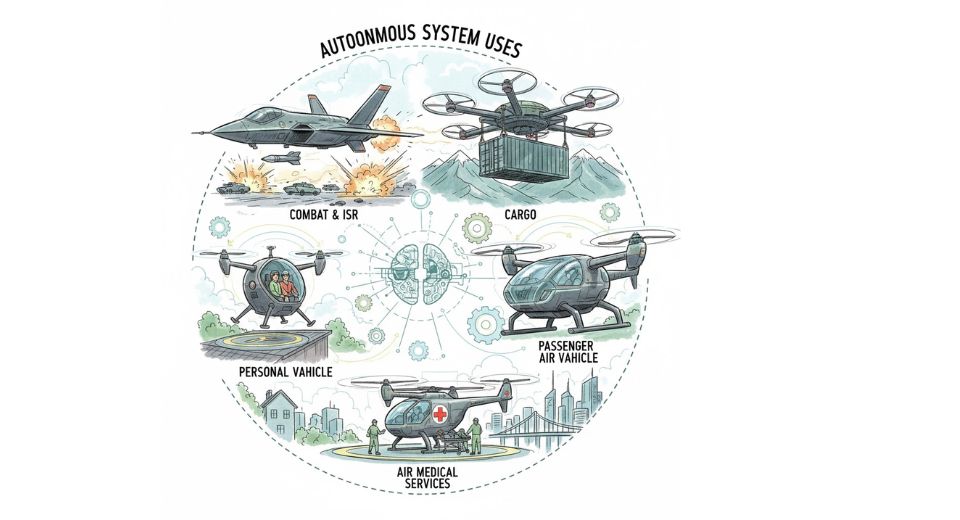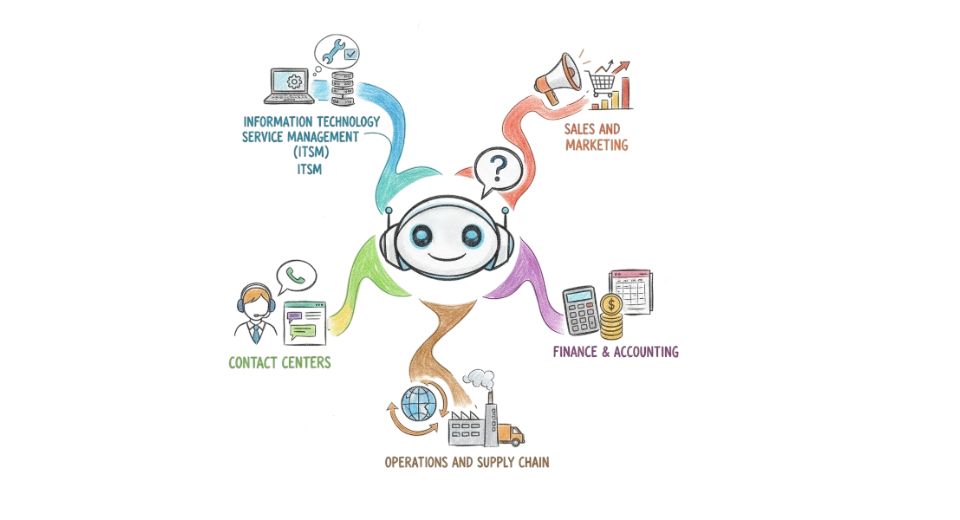MARKET OVERVIEW
The global digital transformation market finds its existence in many different industries, such as health care, manufacturing, retail, financial services, transportation, and more. These industries choose digital technology to maximize the opportunities for resource use and enable processes that might enhance competitiveness within this more digital world. It expands the market scope beyond mere adoption basis, redesigning business models and processes for disruptive purposes.
A rapidly expanding and prominent part of today's economy is described by the global digital transformation market. It may be defined as being propelled by each business area of an organization or business unit. The objective continues to be to achieve the optimal benefits through enhancing efficiencies, advancing the experience of a customer, or establishing new potential areas for firms as they shatter old business models. It would be the utilization of cutting-edge technologies like cloud, artificial intelligence, Internet of Things, and blockchain, which would form seamless, interconnected ecosystems.
Thus, the future of the global digital transformation market will be personalization and more innovation since organizations will focus more on customized solutions according to the requirements of individual firms.
Advancements in 5G technology and growth in edge computing will also increase digital transformation capabilities further and help process real-time data and attain improved connectivity with ease. Organizations will now adopt predictive analytics and machine learning to obtain actionable insights, moving one step closer to data-driven decision-making. Other key factors that will drive the global digital transformation market are sustainability. Various companies will discover digital solutions that will increase environmental efficiency. Green practices and technologies will be the central aspect of everything, to achieve the worldwide agenda on sustainable development. Cybersecurity will remain an issue, with companies investing in secure structures to deal with the dangers of digitalization.
The market geographically expands over North America, Europe, Asia-Pacific, Latin America, and the Middle East and Africa.North America will be a technology leader and the Asia-Pacific region will be close on the heels of growth in the near future as digital solutions are embraced here rapidly in emerging economies.
Europe will pay more attention to regulatory reforms in an effort to push innovation forward; Latin America and the Middle East will pay more attention to integrating new technologies, promoting economic diversification. However, as it expands, its challenges of digital skill shortages in its workforce along with constraints in the infrastructure require technological providers, government, and other industries to persist in working together as the global digital transformation marketplace works to ensure sustainable growth through training and education, developing workforces.
The global digital transformation market is a foundation of the technological revolution that reengineers industries and economies. Its industry encompasses broad uses, which provides unlimited chances of innovation and development. The market will serve as a steppingstone to a future in which digital integration becomes the norm in everything involved in human and business interaction with the advance of technology, dedication to sustainability, and personalization.
Global digital transformation market is estimated to reach $ 6,064,284.72 million by 2032; growing at a CAGR of 21.5% from 2025 to 2032.

GROWTH FACTORS
The global digital transformation market is along the trajectory of gigantic growth through various pivotal drivers. A few of the key driving forces behind the growth are as follows: an increasing demand from business to enhance efficiency in operations as well as lower expenses. Organizations across the globe believe in the significance of the automation and digital tools employed in the process to eliminate unnecessary steps and improve productivity. This transformation is hugely important since businesses are now endeavoring to be ahead in an extremely digital world. Further, expectations of customers for smooth, digital-first experiences in retail, healthcare, and banking are compelling businesses to embrace revolutionary technologies. The concept of being personalized and efficient on the digital side has now turned into the new standard when it comes to customer satisfaction, which compels businesses to keep innovating without a pause. In spite of these encouraging drivers, there are some issues that may impede the growth of the global digital transformation market.
High upfront expenditure, associated with the implementation of sophisticated digital technologies, is still the major hindrance. The majority of organizations are afraid of the upfront cost of infrastructure, software, and high-level personnel, especially for small- and medium-scale firms. Moreover, resistance to change, which is generally based on organizational culture and fear of change by its members, is a major setback. Most companies are confronted with inertia in conventional workflows and mindsets, delaying the pace of digital uptake. Nonetheless, the future of this market is promising, supported by opportunities that are fast unfolding. Cloud-based solutions and digital services are a path for companies to shift towards remote and hybrid work practices.
This industry, especially for cloud technology, will offer scalability, flexibility, and cost-effective solutions with extremely high responsiveness to the evolving requirements of the firms. Indeed, in this development, with more and more work being outsourced outside offices, there is progressively growing demand for digital solutions that are based on safety, based on reliability, and based on accessibility. Some of the key drivers for this market are further innovation in the area of artificial intelligence, data analytics, and IoT technology. In the immediate future, organizations will most likely accelerate the take-up of the global digital transformation market as they look to leverage these opportunities. With cultural resistance and high costs dealt with, companies can realize the full potential of digital transformation to build a more integrated and efficient future.
Consumer needs, technological innovation, and strategic investments will redesign a dynamic environment wherein solutions rendered digital redefine the way industries operate and deliver value to their stakeholders.
MARKET SEGMENTATION
By Type
Technological advancements accompanied by increasing reliance on digital solutions in sectors have propelled the strong growth for global digital transformation market. An accelerating business landscape calls for competition and instigates the embracing of different upcoming technologies like Cloud Computing, Big Data & Analytics, Artificial Intelligence (AI), Internet of Things (IoT), and Blockchain. These technologies transform the sectors while ushering in innovation and enhanced efficiency. Cloud Computing is at the forefront of this revolution to offer scalable and affordable solutions to data storage, processing, and retrieval. Increasingly, companies are shifting their operations to the cloud for the sake of enhanced collaboration and the facilitation of workflow processes.
The resultant flexibility offered through cloud-based solutions allows companies to respond to shifting requirements quickly and offer free access to information from anywhere across the world. This adaptability is going to be a growth driver for the global digital transformation market. The transformation also encompasses Big Data & Analytics, where decisions for any business are based on data. In this context, analysis of massive amounts of information would enable companies to comprehend the behavior of consumers and market dynamics and even comprehend the operational performance. The enhanced strategies will ultimately result in the optimization of resources and providing improved products and services.
Thus, the growing demand for analytics solutions will aid in strengthening the growth of the market as data will grow exponentially. Artificial Intelligence is changing the nature of business by automation, improving the customer experience, and innovation. AI tools are employed for predictive results, customized marketing activities, and streamlined processes. AI will only grow to occupy a space in each and every industry and revolutionize it into unprecedented productivity and efficiency. It will encompass a huge share of the global digital transformation market. The Internet of Things, or IoT, interlinked different devices, hence enabling the sharing of information in real time. Applications of IoT begin from homes to industrial automation, optimizing the features for control and monitoring. The wider the use of IoT, the larger its impact will be on the performances of the businesses and consumers' lifestyle regarding digital transformation. Another emerging trend is the expansion of blockchain. Blockchain's potential for transparency and security will propel it into supply chain management and financial transactions applications. The new use will. Hand the potential for trust and responsibility in business function. Only with these new technologies will it drive the global digital transformation market to a more innovative future. Industry will follow as it converges towards a connected, optimized future.
By Deployment Type
The global digital transformation market keeps defining the future of organizations and industries globally. With technology advancing, business houses have incorporated digital strategies that enhance their operation and the customers' experiences, thus sustaining competitive advantages. This is characterized by fast innovation, in which companies are utilizing newer technologies like artificial intelligence, the Internet of Things (IoT), cloud computing, and big data analytics in redefining their processes. The companies concentrate on such technologies to optimize current processes in addition to opportunities for development and growth.
There are two significant choices available to organizations to implement digital solutions: on-premise or cloud-based. On-premise involves installing software or systems within the physical environment of an organization. Organizations can then have control over data and security, but it involves enormous investment in hardware and maintenance. Cloud-based solutions are emerging as a preferred choice for organizations as they seek flexibility and scalability. These solutions provide businesses with access to services and remote storage of information, provide cost savings, ease of deployment, and fast updates. The decision largely rests on the necessity and long-term strategy of the companies. Small or startup companies may opt for a cloud-based one since they initially make less investment and can scale up based on company expansion. Large companies, for example, utilize on-premise systems since the company can have more control over the infrastructure where data is kept confidential. Business size determines to what extent of digital change solutions an organization would introduce for themselves.
It is more so in the case of small and medium-sized enterprises because they easily adapt because overall their functioning requires efficiency enhancement without resources available of any large enterprise firm. Cloud solutions are highly appealing to them because it provides them technology adoption in processes on a basis that is cost more manageable than the traditional alternative but agile. For big companies, the digital transformation is typically much more sophisticated due to the magnitude of their operations and the necessity for custom solutions that integrate into their current infrastructure. In this scenario, such companies are likely to put money into both on-premise and cloud-based solutions. As an example, although some aspects of the business would enjoy the scalability of the cloud, other aspects need the security and control of on-premise solutions. In the future, the Global Digitaol Transformation market will keep changing based on developing trends in technologies and deployment models. Companies, small, medium, or big, will embrace digital transformation strategies to be competitive, improve operation efficiency, and enjoy a better experience with the customers.
By End User
The global digital transformation market is emerging as a large market since companies are moving progressively towards digital technology to survive and to remain competitive. Endless innovation in digital technology is forcing industries to keep themselves updated with the latest developments in this area so that they can work more efficiently, manage their processes better, and deliver better services to customers. The market has changed quite drastically when it comes to all the major sectors such as BFSI, healthcare, retail, manufacturing, and IT & telecommunications. The market for these sectors is mostly influenced by certain requirements and unique opportunities in each sector.
In the BFSI space, digital transformation has revolutionized how financial institutions and banks engage with customers. Through mobile banking, online payments, and blockchain technology, customers have come to expect quicker, more secure, and customized services. Financial institutions are spending on digital solutions to enhance customer experience, augment security, and enable smoother internal processes. For example, AI-based fraud detection and chatbots for customer support are revolutionizing how businesses in this segment function.
All these are being solved by the digitalization of the healthcare sector, which is improving in terms of patient care and cost savings. Technologies, ranging from electronic health records to telemedicine, to AI-driven diagnostics are transforming the healthcare service delivery of healthcare providers. It is helping professionals in the health sector become precise in diagnosis, permit provision of remote consultation, and facilitate management of patient information.
Consumers are becoming technologically wiser day by day and the expectations from them have now shifted to purchasing products with perfect online experience. Retailers also embrace the internet-based portals and mobile apps through which recommendation has been made better on the basis of artificial intelligence. Increased incorporation of digital technologies into their supply chain reduces the cost of operations and hence allow retailers to have improved stock keeping and distributing processes with timely shipments. Application of digital transformation has redefined the character of manufacturing with which the production is done in the industry. Manufacturers today employ real-time monitoring of operations, optimizing the efficiency, and anticipating the maintenance through devices under IoT, automation, and data analytics. All these advancements will change the way things are made and designed, ultimately landing in customers' pockets, hence competing in this dynamic marketplace.
The IT & telecommunication industry has completely changed as a lot of companies are incorporating cloud computing, 5G networks, and AI to increase their services. Cloud technology enables businesses to scale in a matter of time; 5G networks enable faster and more secure communication, and these measures are leading to even more innovation in the future, opening a new horizon of possibilities for the business world as well as for its consumers. As they mature in the global digital transformation market, these industries will use more digital technologies to remain ahead of the curve, better serve their customers, and innovate
|
Forecast Period |
2025-2032 |
|
Market Size in 2025 |
$1,628,261.63 million |
|
Market Size by 2032 |
$6,064,284.72 Million |
|
Growth Rate from 2025 to 2032 |
21.5% |
|
Base Year |
2024 |
|
Regions Covered |
North America, Europe, Asia-Pacific Green, South America, Middle East & Africa |
REGIONAL ANALYSIS
The global digital transformation market worldwide is going through a major shift in the way companies and industries operate globally. With the increased technology adoption in various industries, pressure on digital transformation is mounting. This mounts differently across regions based on their development of infrastructure as well as economic growth. On this basis, regional analysis is relevant to understand how digital transformation is taking place in the world.
The global digital transformation market is likely to keep on growing at a substantial rate, supported by sophisticated infrastructure and a sufficiently skilled labor force. While both countries have embarked on digital transformation individually, America is a leader when it comes to the adoption and use of technology in its sectors of health care, finance, and manufacturing. Canada is highlighting innovation and sustainability, and this is also pushing the market, while Mexico is stepping up its efforts at digitization in its production sector, signaling a positive development towards a more connected future. With massive investments in artificial intelligence, cloud computing, and other technologies, North America is set to continue leading the global digital transformation movement. The second significant region for the international market of digital transformation is Europe.
The continent has witnessed the complete adoption of digital solutions in different industries, all with an aim to achieve the implementation of the EU's Digital Single Market strategy. The UK, Germany, and France are the pioneers of digitizing their economies. The UK is focusing on fintech and digital services, Germany is focusing on Industry 4.0, and France is focusing on digital health and smart cities. All these activities will likely transform the face of the region and make Europe a significant player in the global market for digital transformation. The Asian countries in the Asia-Pacific region are China, India, Japan, and South Korea, and they will significantly drive the digital transformation market.
China's investment in emerging technologies, including 5G, artificial intelligence, and big data, will propel China's leadership in the global market.
Japan is concentrating on robotics and automation, which puts it at the number one spot in manufacturing. India, however, boasts a fast-expanding information technology sector, coupled with digital government services, which augurs well for the future. South Korea's advancements in smart cities and digital infrastructure innovations will further solidify its position in this market. The continent is also undergoing digital transformation, particularly in nations like Brazil and Argentina, who are embracing the new technologies slowly. Digital solutions are becoming more integrated into various industries, such as agriculture, finance, and retail. Brazilian and Argentine fintech investments as well as Argentina's digitization of government services are also an indicator that the region's market is expanding.
There has been amazing growth in the digital world makeover in the Middle East and Africa. Industries such as finance, healthcare, and education will be heavily laden with digital technology in nations such as the UAE, Saudi Arabia, and Egypt. Even South Africa's expanding digital economy will play a significant role in the overall future of this region's market for digital transformation.
In summary, the global digital transformation market will grow even more as more regions adopt technology in different forms. North America and Europe are already at the forefront of adopting complex technology, and the Asia-Pacific, South America, and Middle East & Africa regions will help drive the growth of the market. These regional dynamics will define the future of digital transformation industrywide and leave perpetual impacts on world economies.

COMPETITIVE PLAYERS
The digital transformation landscape is evolving dynamically, transforming industries and business models globally. Following this shift, the global digital transformation market becomes one of the most significant sectors that have witnessed remarkable development over the past few years, triggered essentially by the massive uptake of newer technologies like cloud computing, artificial intelligence, and data analytics. They would keep on tapping these sophisticated technologies in the next few years to enhance innovation and simplify their operations. In other words, they would overcome limitations as far as interacting with customers and processes are concerned and move towards enhancing their productivity and efficiency.
The major players in this global digital transformation market place are contributing the most to drive this growth. Accenture Plc, Alphabet Inc. (Google), and Amazon Web Services (AWS) are among the providers of leading-edge solutions that drive companies into becoming digital. Accenture is an example because it has developed several service offerings, such as cloud, AI, and blockchain that will help companies make changes and transform to become digitally ready. Alphabet Inc., commonly known as Google, has contributed much toward developing cloud and machine learning technology. It aids in scaling business processes with improved data analytics capabilities. In the meantime, AWS keeps on leading the way in cloud infrastructure as a service, giving organizations a robust cloud offering to assist them in their transformation journey. Along with such entities, IBM Corporation and Microsoft Corporation are industry giants as well as established in the global digital transformation market. IBM's AI and hybrid cloud capabilities will enable companies to take action on the insights delivered, enhance agility, and unlock additional new growth opportunities.
Microsoft has become a leader in its cloud products from Azure, which is indeed enabling companies to put into practice digital strategies and leverage the latest technology that is trendy at this time. Salesforce, SAP SE, and Adobe Inc. are also at the forefront of the change, with their niche software solutions that help organizations better manage customer relationships, automate processes, and design experiences for customers on an individual basis.
Oracle Corporation, Cisco Systems Inc., Siemens AG, and Hewlett Packard Enterprise are also major other notable players. These businesses are at the forefront of creating varied software and hardware products that a contemporary enterprise would need to refresh its infrastructure, and they have gained a lot of steam at this juncture.
When this new world gets transformed, the big players will have a hand in shaping the direction of the market, and the businesses will evolve themselves based on the trend of the completely digital world. In the future, the market for Global Digital Transformation will keep expanding, with these businesses continually developing their services. As technologies become new and business requirements shift, these organizations will be pivotal in enabling businesses to transition digitally.
Digital Transformation Market Key Segments:
By Type
- Cloud Computing
- Big Data & Analytics
- Artificial Intelligence (AI)
- Internet of Things (IoT)
- Blockchain
By Deployment Type
- On-Premise
- Cloud-based
By Enterprise Size
- Small & Medium Enterprises (SMEs)
- Large Enterprises
By End User
- BFSI (Banking, Financial Services, and Insurance)
- Healthcare
- Retail
- Manufacturing
- IT & Telecommunications
Key Global Digital Transformation Industry Players
- Accenture Plc
- Alphabet Inc. (Google)
- Amazon Web Services (AWS)
- IBM Corporation
- Microsoft Corporation
- Salesforce, Inc.
- SAP SE
- Adobe Inc.
- Oracle Corporation
- Cisco Systems Inc.
- Siemens AG
- Hewlett Packard Enterprise (HPE)
WHAT REPORT PROVIDES
- Full in-depth analysis of the parent Industry
- Important changes in market and its dynamics
- Segmentation details of the market
- Former, on-going, and projected market analysis in terms of volume and value
- Assessment of niche industry developments
- Market share analysis
- Key strategies of major players
- Emerging segments and regional growth potential








 US: +1 3023308252
US: +1 3023308252






